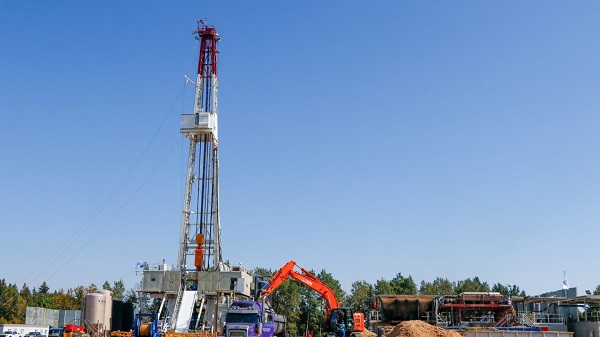Alberta
Alberta’s emergency grid alert underscores vital role diverse energy mix plays in Canada

From the Canadian Energy Centre
By Cody Ciona
After a major cold spell affected the capacity of Alberta’s power grid to provide electricity, experts weigh in on the need for multiple sources of energy
The crucial need for Canada to have a flexible and diverse energy grid was given a practical demonstration this past weekend as frigid winter temperatures in Alberta prompted a grid emergency.
With temperatures in some places dropping to almost –50C with the wind chill, provincial officials issued an emergency alert asking Albertans to immediately reduce electricity usage, with the grid approaching maximum capacity during peak hours.
With wind and solar assets unable to contribute power and the unexpected shutdown of two natural gas plants, Albertans faced the possibility of rolling blackouts in dangerously cold conditions.
A day after the emergency, the Alberta Electric System Operator (AESO) thanked Albertans who responded quickly to reduce the demand load.
“This is an example of why we need to ensure that we have sufficient dispatchable, dependable generation available to us as a province to meet what is always our most challenging time, which is those cold, dark winter nights,” Michael Law, CEO of AESO, told the Calgary Herald.
The prospect of failure in the worst possible circumstances prompted energy analysts to highlight the critical need for a diverse and flexible energy grid.
“You could have had 50,000 megawatts, all the solar farms and wind farms in the world located in Alberta, and it still wouldn’t have come anywhere close to closing that gap,” University of Alberta economics professor Andrew Leach told CBC News.
Wind and solar can be major contributors to the grid when conditions allow, but when the sun goes down and the wind stops, base load power sources like natural gas reliably protect the system.
Leach said system operators need to plan for supply to manage adverse weather conditions to ensure the reliability of the grid.
“Whether it’s natural gas, nuclear, import capacity, battery storage, etc., geothermal, there’s nobody that’s arguing against that.”
With policymakers pushing for more electrification, University of Alberta industrial engineering professor Tim Weis said Alberta isn’t alone in the need for resilient and stable power supply.
“I think we need to wrestle with that and realize that we are moving into a world where there’s going to be more electrical demands on the system,” he told Global News.
“We are moving into a new world. We’re not the only ones facing some of these challenges. I think we’re a little bit behind responding in terms of dispatchable demand and allowing consumers the opportunity to automatically respond to some of these things.”
As the federal government aims to decarbonize Canada’s electricity generation by 2035 with sweeping regulations, flexibility for some jurisdictions is a key factor that needs to be addressed, said University of Calgary associate professor of economics Blake Shaffer.
“I do think that this shows us that no amount of renewables would push us to have solved that winter peak on Saturday,” he told CTV Calgary.
“And that means flexibility to have a gas fleet, for example, that is capable of being there for a few hours for a few days, maybe a few weeks a year. And we need the technical and economic setup to make that worth their while to be there,” Shaffer said.
“We saw this cold weather coming, everybody was preparing for it. The wind forecast was out a week ago we saw there was going to be no wind. Thankfully, the gas thermal fleet performed amazingly well.”
Natural gas generation was able to backstop the reduction in renewable power, said ARC Energy Research Institute executive director Jackie Forrest.
“The system delivered during the deep freeze this past weekend… so reliably that no one even noticed… I have long argued that gaseous fuels are needed in the mix for energy transition and the need to become cleaner; this is why,” said Forrest on X, formerly known as Twitter.
According to Forrest’s colleague, energy economist Peter Tertzakian, Alberta’s oil sands industry also plays a big role in power generation in the province with the prominence of natural gas-powered cogeneration facilities.
“The power that’s generated in this province during this cold spell, about 40 per cent of it comes from cogeneration. The bulk of which comes from the oil sands and all their big generators which have surplus electricity that they feed into the grid,” said Tertzakian on ARC Energy Institute’s latest podcast.
“I think it’s important to understand that any policies that affect oil sands also affect the electricity grid.”
Alberta
This new Canada–Alberta pipeline agreement will cost you more than you think


Canada and Alberta’s new net-zero energy deal is being promoted as progress, but it also brings rising costs. In this video, I break down the increase to Alberta’s industrial carbon price, how those costs can raise fuel, heating, and grocery prices, and why taxpayer-funded carbon-capture projects and potential pipeline delays could add even more. Here’s what this agreement could mean for Canadians.
Watch Nataliya Bankert’s latest video.
Alberta
Alberta will defend law-abiding gun owners who defend themselves

Alberta’s government will introduce a motion under the Alberta Sovereignty within a United Canada Act to defend law-abiding firearms owners.
A new motion under the Alberta Sovereignty within a United Canada Act will, if passed by the legislature, instruct all provincial entities, including law-enforcement agencies such as municipal police services and the RCMP, to decline to enforce or implement the federal gun seizure program. The motion also makes clear that Albertans have the right to use reasonable force to defend themselves, their families and their homes from intruders.
This builds on the steps Alberta has already taken to reduce crime, strengthen public safety and assert provincial jurisdiction over firearms. This includes passing the Alberta Firearms Act to establish the Alberta Chief Firearms Office, along with the Alberta Firearms Regulation and the Seizure Agent and Provider Licensing Regulation.
“It’s time for Ottawa to stop targeting the wrong people. Albertans have the right to protect their homes and their families. No one should hesitate to defend themselves when faced with a threat at their own doorway. Law-abiding citizens, hunters, farmers and sport shooters are not the source of violent crime, yet the federal government wants to confiscate their property while illegal guns pour across our borders. Alberta will not stand by while responsible gun owners are treated like criminals. This motion is about using every legal tool we have to protect their rights, uphold public safety and push back on federal overreach into provincial jurisdiction.”
“When someone breaks into your home, the law recognizes that you have enhanced rights to protect yourself and your family. Alberta is making that principle unmistakably clear: lawful, reasonable self-defence will be respected, not criminalized.”
“As an experienced former law enforcement officer, law-abiding gun owners have never been an issue, in my own personal experience, nor has there been any data to support that law-abiding gun owners are the ones that are committing violent gun crimes. The illegal guns that you see being used by criminals are typically being smuggled in from the United States. The federal government should help us strengthen the border, helping us to stop illegal guns from coming into Canada. This would further enhance safety and security for the people of Alberta and Canada as opposed to going after lawful gun owners.”
Under the Alberta Firearms Regulation, municipalities, law enforcement and police commissions must obtain approval from Alberta’s Minister of Justice before accepting funding to participate in the Assault-Style Firearms Compensation Program.
“Misguided federal initiatives such as the handgun transfer ban and the Order in Council firearms prohibitions of 2020, 2024 and 2025 have had a devastating impact on the safe, legitimate activities of the firearms community and the businesses that support it, while having no discernible effect on criminal activity. I am proud to see that the Alberta government is pushing back and supporting lawful firearms owners through these measures.”
“Licensed gun owners and all Albertans can rest assured that their government, under the leadership of the UCP, is laser focused on protecting law abiding citizens while prioritizing real public safety.”
“The Alberta Hunter Education Instructors Association will continue to support our government and the Alberta chief firearms officer in our joint quest to use safety training and education as the key tools to ensure we have safer streets and communities. Safe and responsible use of firearms in Alberta is a key part of our heritage, culture, and our rich and precious heritage.”
Key facts:
- Pursuant to the Attorney General’s recent guidance protocols, Alberta’s prosecutors will decline to prosecute offences under the federal gun seizure program when it is not in the public interest.
- The Attorney General’s recent guidance protocol directs prosecutors to not prosecute home defence offences when it is not in the public interest.
- Total spending on the federal Assault-Style Firearms Compensation Program is expected to exceed $750 million.
- The firearms motion considers the Alberta Bill of Rights, the Constitution Act, 1867 and the Criminal Code.
- Currently 10 per cent of adult Albertans are licenced to use and own firearms. There are 381,900 firearms licences in Alberta.
- Alberta has 638 licensed firearms businesses, 138 shooting ranges and 91 shooting clubs.
-

 C2C Journal2 days ago
C2C Journal2 days agoLearning the Truth about “Children’s Graves” and Residential Schools is More Important than Ever
-

 Business2 days ago
Business2 days agoIs there a cure for Alzheimer’s Disease?
-

 Brownstone Institute2 days ago
Brownstone Institute2 days agoThe Unmasking of Vaccine Science
-

 Bruce Dowbiggin2 days ago
Bruce Dowbiggin2 days agoSometimes An Ingrate Nation Pt. 2: The Great One Makes His Choice
-

 Alberta2 days ago
Alberta2 days agoNew era of police accountability
-

 Alberta2 days ago
Alberta2 days agoEmissions Reduction Alberta offering financial boost for the next transformative drilling idea
-

 Business1 day ago
Business1 day agoRecent price declines don’t solve Toronto’s housing affordability crisis
-

 armed forces2 days ago
armed forces2 days agoGlobal Military Industrial Complex Has Never Had It So Good, New Report Finds






